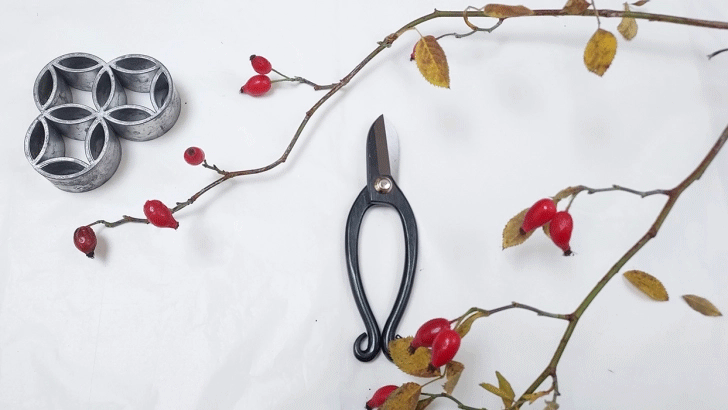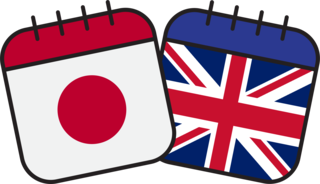
IKEBANA DEMONSTRATION SERIES Hana no En – Encounters through Flowers
- 13 - 16 October 2022
- Various Times
- The Hall, Japan House London, 101-111 Kensington High Street, London, W8 5SA
- https://www.japanhouselondon.uk/whats-on/2022/demonstration-series-hana-no-en-encounters-through-flowers/
- +44 (0)20 7932 7100
- info@japanhouselondon.uk
- Tweet
Discover four leading schools of ikebana, Japanese flower design, with a series of demonstrations presented by Ikebana International’s London Chapter accompanying the display Hana no En – Encounters through Flowers at Japan House London.
Ikebana, often translated as ‘giving life to flowers’ and also known as kadō (lit. ‘the way of flowers’), originated over 500 years ago in Japan and has since evolved into many different schools each with their own distinctive philosophy.
Guests can discover the rich diversity of ikebana by enjoying demonstrations led by practitioners of four schools: Sōgetsu School, Ikenobō, Nippon Kadō Koryū and Ohara School of Ikebana. During each demonstration, a representative of the school gives an introduction to its distinctive characteristics while creating a selection of floral arrangements. Guests are encouraged to ask questions during the demonstration events.
Demonstration Programme
Booking is essential for demonstrations.
- Thursday 13 October 2022, 13:00-14:00 (Sōgetsu School)
- Saturday 15 October 2022, 13:00-14:00 (Ikenobō)
- Saturday 15 October 2022, 15:30-16:30 (Nippon Kadō Koryū)
- Sunday 16 October 2022, 13:00-14:00 (Ohara School of Ikebana)
Schools Featured in Demonstration Programme
Demonstration 1: Sōgetsu School
Demonstrator: Furukawa Kaoru
The Sōgetsu School was founded in 1927 by Teshigahara Sōfu. The current iemoto (master of the school) is Teshigawara Akane, the school’s 4th iemoto. A central idea of Sōgetsu ikebana is that it can be enjoyed anytime, anywhere by anyone using any materials. Arrangements reflect the personality of the arranger. The school has its headquarters in Tokyo and has branches and study groups not only in Japan but also in 38 other countries and regions.
Demonstration 2: Ikenobō
Demonstrator: Pearce Sachiko
Ikenobō is the oldest and largest school of ikebana. It was founded in the 15th century CE by the Buddhist monk Senno. The Ikenobō school is based at the Rokkaku-dō temple in Kyoto. The name is said to derive from a priest’s hut (bō) near a pond (ike) where Prince Shōtoku bathed. Students of Ikenobō receive both classical training and encouragement to explore the use of ikebana in contemporary life.
Demonstration 3: Nippon Kadō Koryū
Demonstrator: Takahashi Sumie
Nippon Kadō Koryū was established by Tsuruta Ichiyō in 1920. The school’s representative styles are seika, moribana and nageire. Seiko reflects nature and the natural beauty of materials and only natural materials are used to support the arrangement while the modern moribana style reflects the ever-changing Japanese ways of living. Nageire, which literally means 'to throw in' is an arrangement usually made in a basket or vase, often used as decoration for Japanese tea rooms.
Demonstraton 4: Ohara School of Ikebana
Demonstrator: Kojima Ruriko
The Ohara School of Ikebana was founded in 1895 by Ohara Unshin at a time when Japan had opened itself to European and American influences and began to import European flowers. Unshin created a new form of ikebana which he called the moribana style, which became very popular and spread among other schools. Many styles and forms of expressions have been developed under the iemoto (school heads) who have succeeded him.
About Ikebana International
Ikebana International is a worldwide, non-profit organisation founded in 1956 dedicated to the promotion and appreciation of ikebana, Japanese flower arrangement. With its headquarters in Tokyo, Japan, and 162 chapters around the world, Ikebana International benefits from the advice and full co-operation of the heads of all the leading Japanese schools of ikebana. The London chapter, No.6, founded in 1956, was the first chapter in Europe. With members from many different schools, each year the chapters runs a programme of demonstrations, workshops and an annual exhibition.
Booking Essential | Admission Free
